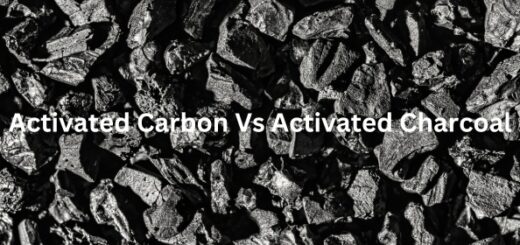Why Activated Carbon is Essential for Industrial Wastewater Treatment
With the escalation of the industrial revolution and rapid urbanization, we are generating huge amounts of wastewater all over the globe. According to International Water Association, Waste Water Report, 2018- Around 80% of the total wastewater generated is discharged into water channels that pose a threat to aquatic life and human health. Additionally, in developed countries, industrial water consumption is higher than the developing countries. And owing to poor wastewater treatment facilities such as breakdown of electricity, poor maintenance, and lack of inexperienced manpower, untreated wastewater effluents are often discharged into the waterbodies harming the aquatic life as well as humans in the form of environmental pollution.
In this article we will go through the hazards of industrial wastewater and dive into the application of activated carbon, answering why it is essential for industrial wastewater treatment.
Hazards of Industrial Wastewater
Wastewater with heavy metals is discharged by industrial activities such as paint industries, vehicle manufacturing, and mining industries whereas wastewater released from rubber industries, and food and beverage industries contains huge amounts of organic pollutants and inorganic substances. They harness a plethora of microorganisms such as bacteria, protozoa, viruses, and algae. Subsequently, they play an important role in spreading waterborne diseases, resulting in significant health concerns.
Generally, proper treatment of wastewater is challenging and requires a powerful adsorbent to capture these pollutants.
Strategic Treatment of Industrial Wastewater
The environmental impact of industrial wastewater is notable. To safely discharge these liquids, industrial facilities must embrace some strategic treatment methodology, purifying them for safe disposal or reuse.
Traditional methods for wastewater treatment incorporate ion exchange, membrane processes, chemical precipitation, adsorption, and evaporation. Out of these methodologies, activated carbon aka activated charcoal is considered to be the low-cost and most effective adsorptive medium to treat industrial effluents.
Activated carbon, as a flawless porous adsorbent, stands out as one of the great alternatives in wastewater treatment. It is also considered a renewable source because most of the biomass is used as activated carbon.
Activated carbons are classified and put into action according to their width of pores. The adsorption capacities of organic substances to the activated carbon depend on the size of the organic substances. Minute molecules such as phenol compounds can access the micropores, organic substances can attach to the meso pores and bacteria can access the macro pores of the activated carbon for water treatment.
Advantages of Activated Carbon for Wastewater Treatment
Activated carbon possesses outstanding advantages, including well-developed micropores, greater surface area, high mechanical strength, robust adsorption performance, commendable purification capabilities, rapid adsorption rate, stable chemical properties, long-lasting substance, and ease of regeneration.
It exhibits a high adsorption capacity for organic compounds, actively eliminating odor, color, and taste from wastewater. When we implement activated carbon for wastewater treatment, the biochemical oxygen demand (BOD) can be minimized by up to 99%.
Its application is boundless, proving effective against the predominance of organic compounds in wastewater, including those that are hard for microorganisms to degrade.
It shows strong adaptability, offering stable treatment results against contrasting water quantities and organic loads.
Beneficial substances can be recovered by regenerating saturated activated carbon, for example, treating phenol-inclusive wastewater and recuperating sodium phenolate using alkali.
In contrast to traditional wastewater treatment methods, activated carbon’s raw materials are renewable, resulting in minimum operational costs.
Extensive Applications of Activated Carbon for Wastewater Treatment
As you may know, activated carbon is produced by thermal decomposition, a complete or partial combustion process of carbonaceous material, it has proven capabilities to eliminate heavy metals, organic pollutants, and microorganisms.
Elimination of Heavy Metals in Water- Activated carbon demonstrates robust adsorption of heavy metals in wastewater, including mercury, chromium, iron, nickel, and cobalt, widely incorporated in paint industry, textile dyeing, chemical plants, and disposal of waste in landfills.
Liquefied Organic Substances and Trace Pollutants- Activated carbon for wastewater treatment also solves issues related to dissolved organic substances and trace pollutants. It basically eliminates phenolic compounds, benzene compounds, synthetic dyes, and amine compounds.
Elimination of organic pollutants in water bodies- Generic organic pollutants in water bodies such as nitrobenzene compounds, petroleum, organic phosphorous pesticides, and formaldehyde pose a threat to aquatic life over time. On the other hand, palm oil factory wastewater, with high chemical oxygen demand (COD) and biochemical oxygen demand (BOD), also generates a negative impact on the biological lives underwater. Oil palm kernel shell-activated carbon in the up-flow continuous adsorption system eliminates all the harmful effects of the factory wastewater.
Elimination of Pigments in Water Bodies– Activated carbon for water treatment also involves the elimination of pigments in wastewater generated by the industries. This ultimately enhances wastewater transparency and makes it easier to treat.
Removal of Methanol and Phenol– The presence of methanol in artificial fiber, forestry chemicals, and sulfate pulp chemical wastewater is a serious challenge along with additional amounts of phenol from gas plants, resin plants coking plants, and phenolic resin production methodologies. Activated carbon displays commendable adsorption performance for both phenol and low-concentration methanol, proactively eliminating environmental harm.
To conclude, activated carbon is essential for industrial wastewater treatment, but you also have to know which types of activated carbon are most effective. According to legit research and practical applications, it is evident that powdered and granular activated carbon are the best substances to eliminate organic chemicals and minimize toxicity in industrial wastewater; ultimately making them safe for discharge into the surface water.
So, it is high time that industries resort to activated carbon for their water treatment through legit activated carbon suppliers like Suneeta Carbons offering a wide range of products such as- wood based granular activated carbon, coconut shell-based granular activated carbon, and coal-based granular and powder activated carbon.

